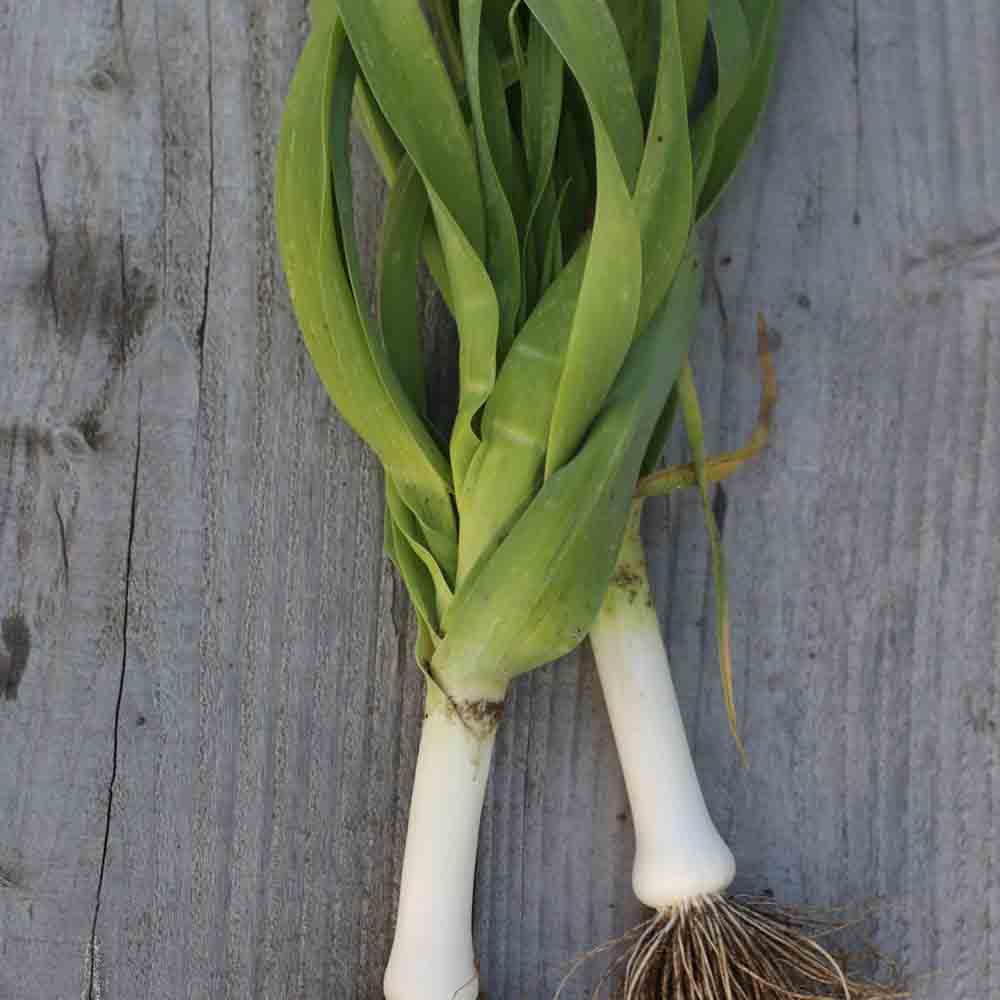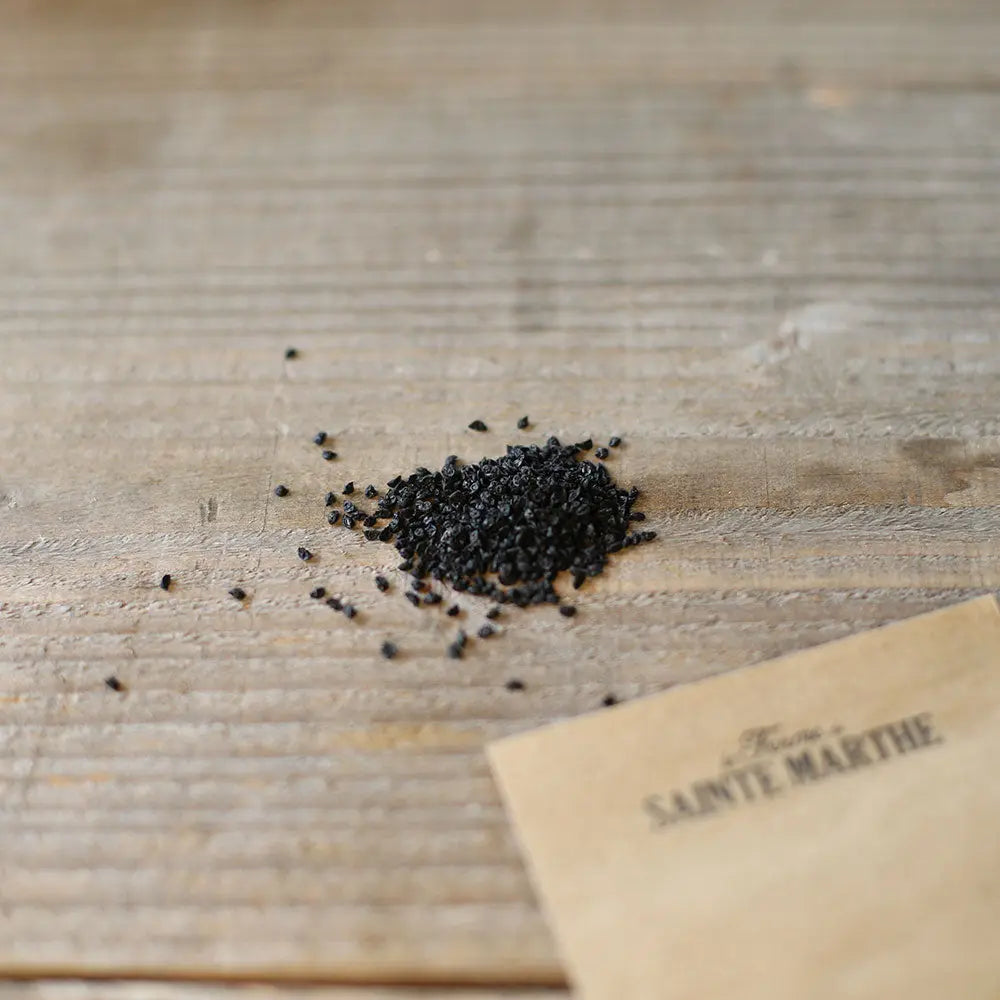LARGE YELLOW LEEK FROM POITOU AB
Allium porrum
The large yellow leek from Poitou is an early variety with a large, short, white barrel and broad, long, blond-green leaves of excellent taste. This variety is ideal for an autumn harvest.
The large yellow leek from Poitou does not always withstand harsh winters.
Leeks are known for their many virtues (digestive, antiseptic, etc.), rich in vitamins, copper, iron, phosphorus, they are an essential autumn and winter vegetable. They can be eaten cooked, in vinaigrette, au gratin, in pies, in soups and stews.
Successful sowing of Gros du Poitou Yellow Leeks
From February to the end of April, loosen the soil with a broadfork and sow in a nursery bed in furrows 1 cm deep, spaced at least 5 cm apart. 1 seed every centimetre. Cover with potting soil, firm down and water.
Keep the soil moist for 3 weeks until the leeks sprout.
In May/June, transplant the plants into place once they reach the diameter of a pencil.
Planting Leeks
Prune the roots and leaves, leaving only one-third of their length. This will encourage new root growth and limit water evaporation from the leaves.
Soak the roots in a mixture of water and soil.
Plant the young leeks in May/June in fresh, rich, well-fertilized soil 15 cm apart, in rows 35 cm apart, digging them in 10-15 cm, then earth up after a few weeks of growth.
Frequent watering with light rain to prevent pests. Mulching.
Good Associations
It's customary to grow leeks between rows of carrots. Indeed, the two get along wonderfully: the smell of leeks repels carrot flies, while the presence of carrots repels leek moths.
The Enemies
Leek moth or leaf miner: use an insect repellent as a preventative measure, and pheromones against leek worms.









